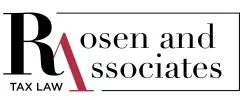

A repeated question in the realm of taxation revolves around the nature of expenditures; whereby misunderstandings arise as to whether an expense incurred by a taxpayer.
Canada Tax

A repeated question in the realm of taxation revolves around the nature of expenditures; whereby misunderstandings arise as to whether an expense incurred by a taxpayer is classified as a capital expenditure or as a current expenditure. This distinction is crucial for tax purposes, as it determines how expenditures are reported in financial statements and tax returns. Each type of expenditure plays a distinct role in financial management and strategic planning. Since the Income Tax Act ("ITA") does not provide much, if any, guidance between the distinction between a current or capital expenditure, this article seeks to explain the differentiation between the two types of expenditures.
Current expenditures generate income primarily in the current taxation year, rather than in future years. These expenditures can be immediately deducted from income. Some examples of current expenditures include:
On the other hand, capital expenditures are intended to produce income primarily in future taxation years, rather than the current year. The deduction of capital expenditures is limited. Some capital expenditures can only be deducted over time through capital cost allowance ("CCA"), while others may not be deductible at all. Some examples of capital expenditures that can be deducted over time through CAA include:
Conversely, a capital expenditures that cannot be deducted at all includes the cost of land (in most cases).
Subsections 18(1) and 20(1) of the ITA outline specific circumstances where deductions for capital expenditures are permissible, typically through CCA.
The CRA Income Tax Folio S3-F4-C1 and Income Tax Regulations ("Regulations") 1100-1107 specify which capital expenditures are eligible for CCA and which are not entitled to any deduction. Further, the guidelines discussed in sections 1.4 to 1.12 offer further clarity on the CRA's perspective regarding expenditures on existing properties. These considerations include:
For capital expenditures to qualify for CCA, they must meet four criteria:
The Supreme Court of Canada's decision in Canada v Johns-Mansville Corp (1985), provided a multi-factor test to differentiate between a capital or current expenditures. In this case, Johns-Mansville Corp owned an open-pit mine which they would dig deeper and deeper into each year. As the mine became deeper, the road network within needed to become wider. To allow for this, Johns-Mansville Corp would annually purchase land surrounding the perimeter of the open-pit mine. The land purchased didn't contain ore, however, most of the purchased land was cleared away so that a more gradual slope could be created. Johns Mansville Corp deducted the cost of the land acquisitions as a current expenditure. The Ministry of National Revenue denied this expenditure on the grounds that cost of land was a capital expenditure.
Canada v Johns-Mansville Corp identifies some questions that point to what capital expenditures are, including:
The distinction between capital and current expenditures is vital for tax reporting and financial planning. While the ITA may lack specific guidance, case law and CRA guidelines offer valuable insights for taxpayers. In understanding capital cost allowance eligibility and the legal tests for the distinction between capital and current expenditures, a taxpayer can make more informed decisions.
The content of this article is intended to provide a general guide to the subject matter. Specialist advice should be sought about your specific circumstances.